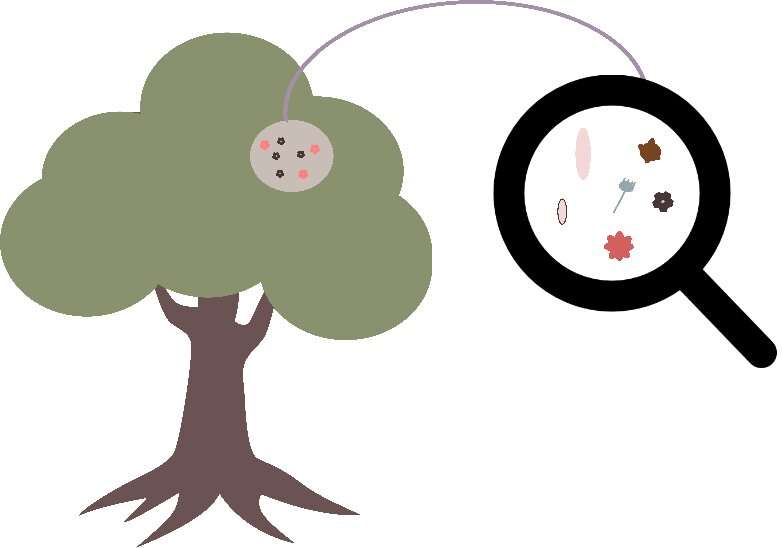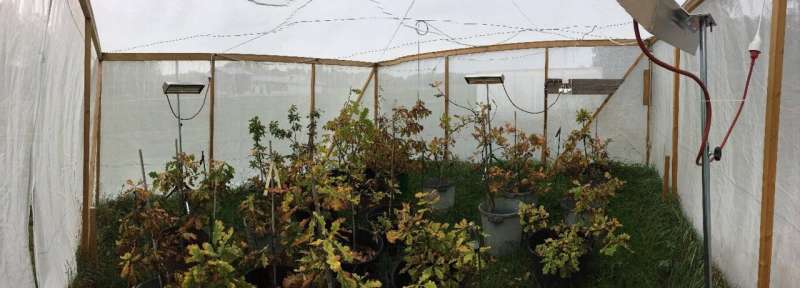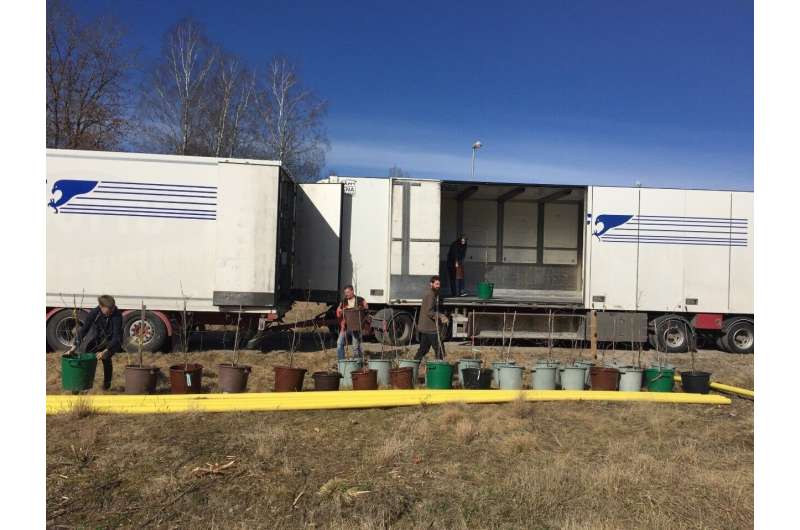Climate warming influences fungal communities on oak leaves

Climate warming plays a larger role than plant genes in influencing the number and identity of fungal species on oak leaves, especially in autumn. Recently published in the journal New Phytologist, this research by ecologists sheds light on how warming and tree genes affect the dynamics of fungal communities across the season.
"One of our major findings was that elevated temperature decreased the number of fungal species and changed their community composition, especially in the late season," says Maria Faticov, a researcher at the Department of Ecology, Environment and Plant Sciences (DEEP) at Stockholm University.
Plants host thousands of microscopic organisms and leaves are no exception. Leaves harbor a large diversity of microorganisms including fungi, bacteria and, less frequently, archaea. Fungi are among the most diverse groups of microorganisms living on leaves. Some of these microscopic fungi cause disease, others can promote plant growth and defend leaves against biotic and abiotic stresses, and still others play an important role in leaf senescence and decomposition.
Climate is one of the main factors influencing fungal development, either directly or indirectly, by triggering plant defenses.
"From earlier studies, we know that the number of fungal species and their abundance change as leaves age and the season progresses from spring to autumn. What we do not know is what role climate warming and plant genetic variation play in shaping fungal communities across the growing season" says Ayco Tack, associate professor at the Department of Ecology, Environment and Plant Sciences, Stockholm University.

To answer this question, researchers took on a challenging project—they built 6 identical cages in a field to the north of Stockholm, each cage the size of a small living room. Scientists put 132 young oak trees into the cages that represented 5 different genotypes. Half of the cages were heated from May to October using ceramic heaters. The remaining ones were left as control and did not have heaters in them. The temperature in the heated cages was increased by ca 2°C to mimic the global temperature increase predicted by scientists to occur by the end of the century. Researchers collected leaves in the early, middle and late growing season and used DNA sequencing to find out which fungi had colonized the leaves. This way they could compare the changes in fungal community structure between the control and warming treatment and also among oak genotypes.
"We observed that fungal community composition drastically changed from spring to autumn, with yeasts increasing in relative abundance and fungal pathogens decreasing. Interestingly, while experimental warming had a major impact on the fungal community, oak genotype explained only a minor part of the variation in the number of fungal species and their composition" says Faticov.
These findings suggest that warming is one of the most important environmental factors shaping fungal community development during the growing season and emphasizes how profound the effects of ongoing climate change may be to plant health and ecosystem functioning.

Researchers did not link the observed change in fungal community structure under warming with plant health and ecosystem functioning. More detailed long-term experiments are needed to predict how changes in the fungal community under climate warming will influence the plants they live on and their surrounding environment.
"In future studies, it will be interesting to investigate how these changes in the number of fungal species and their abundances under warmer climate impact such important processes as plant health, leaf senescence and litter decomposition" says Faticov.
More information: Maria Faticov et al, Climate warming dominates over plant genotype in shaping the seasonal trajectory of foliar fungal communities on oak, New Phytologist (2021). DOI: 10.1111/nph.17434
Journal information: New Phytologist
Provided by Stockholm University



















